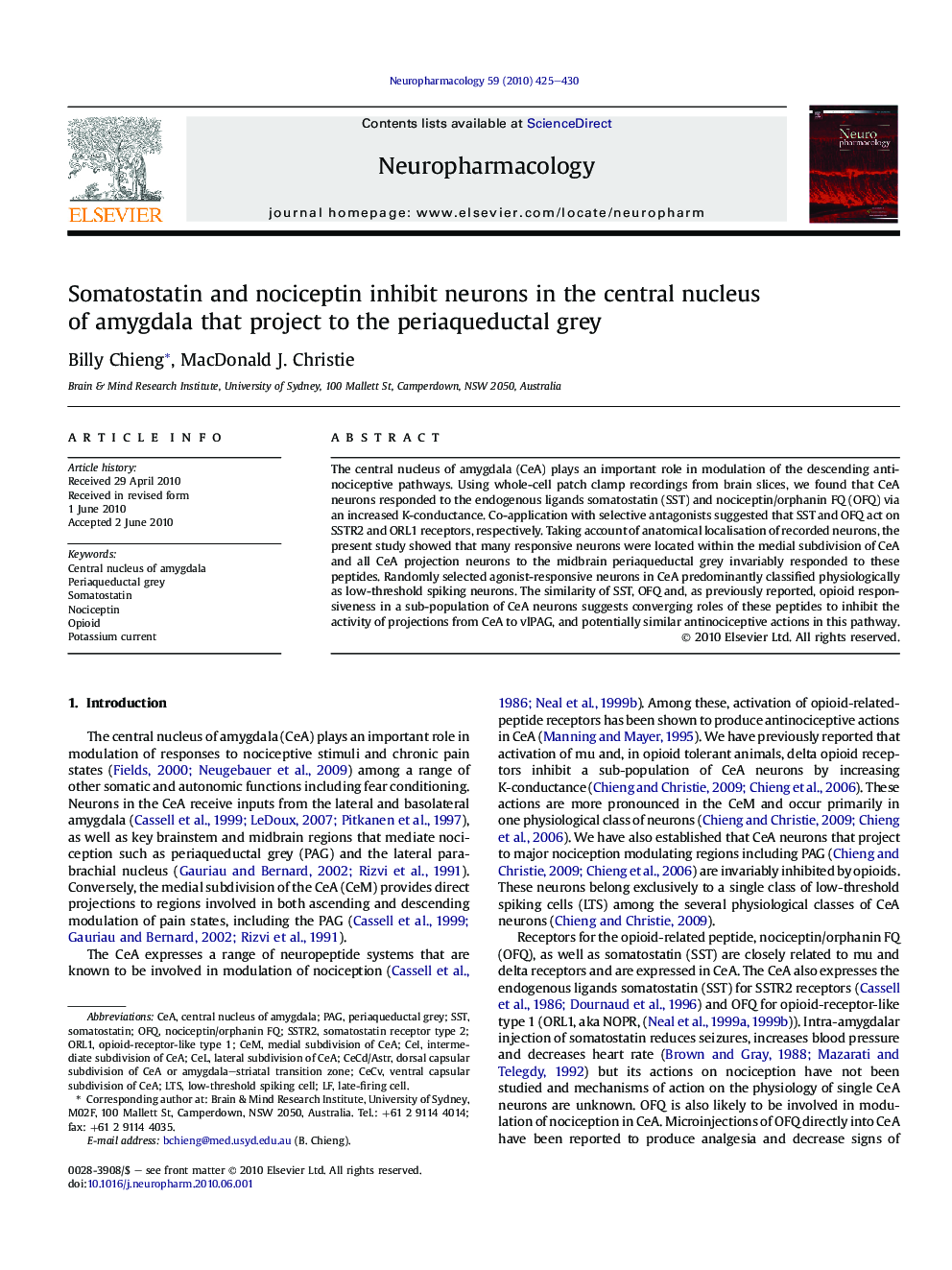| Article ID | Journal | Published Year | Pages | File Type |
|---|---|---|---|---|
| 2493947 | Neuropharmacology | 2010 | 6 Pages |
The central nucleus of amygdala (CeA) plays an important role in modulation of the descending antinociceptive pathways. Using whole-cell patch clamp recordings from brain slices, we found that CeA neurons responded to the endogenous ligands somatostatin (SST) and nociceptin/orphanin FQ (OFQ) via an increased K-conductance. Co-application with selective antagonists suggested that SST and OFQ act on SSTR2 and ORL1 receptors, respectively. Taking account of anatomical localisation of recorded neurons, the present study showed that many responsive neurons were located within the medial subdivision of CeA and all CeA projection neurons to the midbrain periaqueductal grey invariably responded to these peptides. Randomly selected agonist-responsive neurons in CeA predominantly classified physiologically as low-threshold spiking neurons. The similarity of SST, OFQ and, as previously reported, opioid responsiveness in a sub-population of CeA neurons suggests converging roles of these peptides to inhibit the activity of projections from CeA to vlPAG, and potentially similar antinociceptive actions in this pathway.
